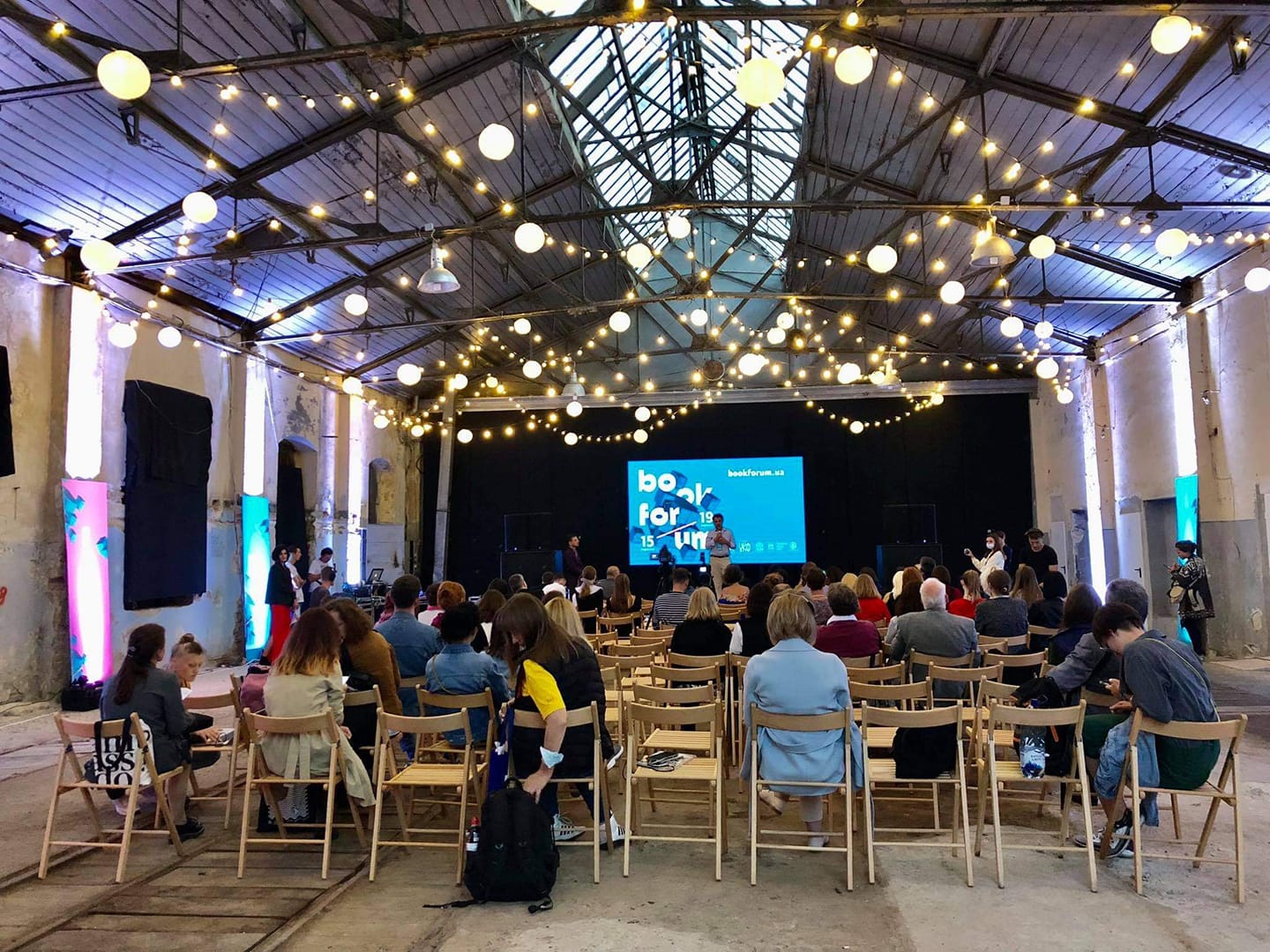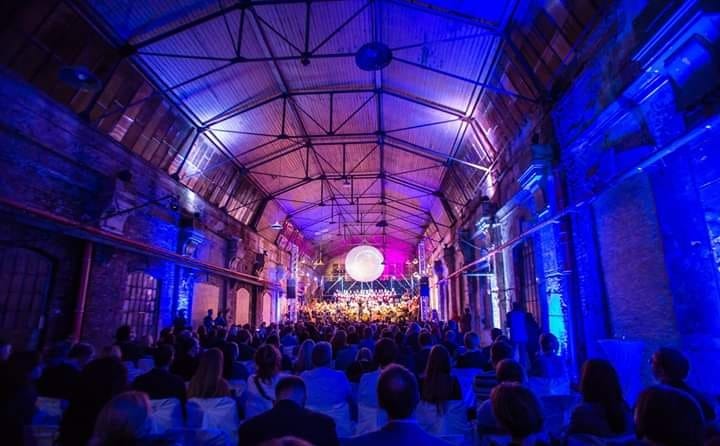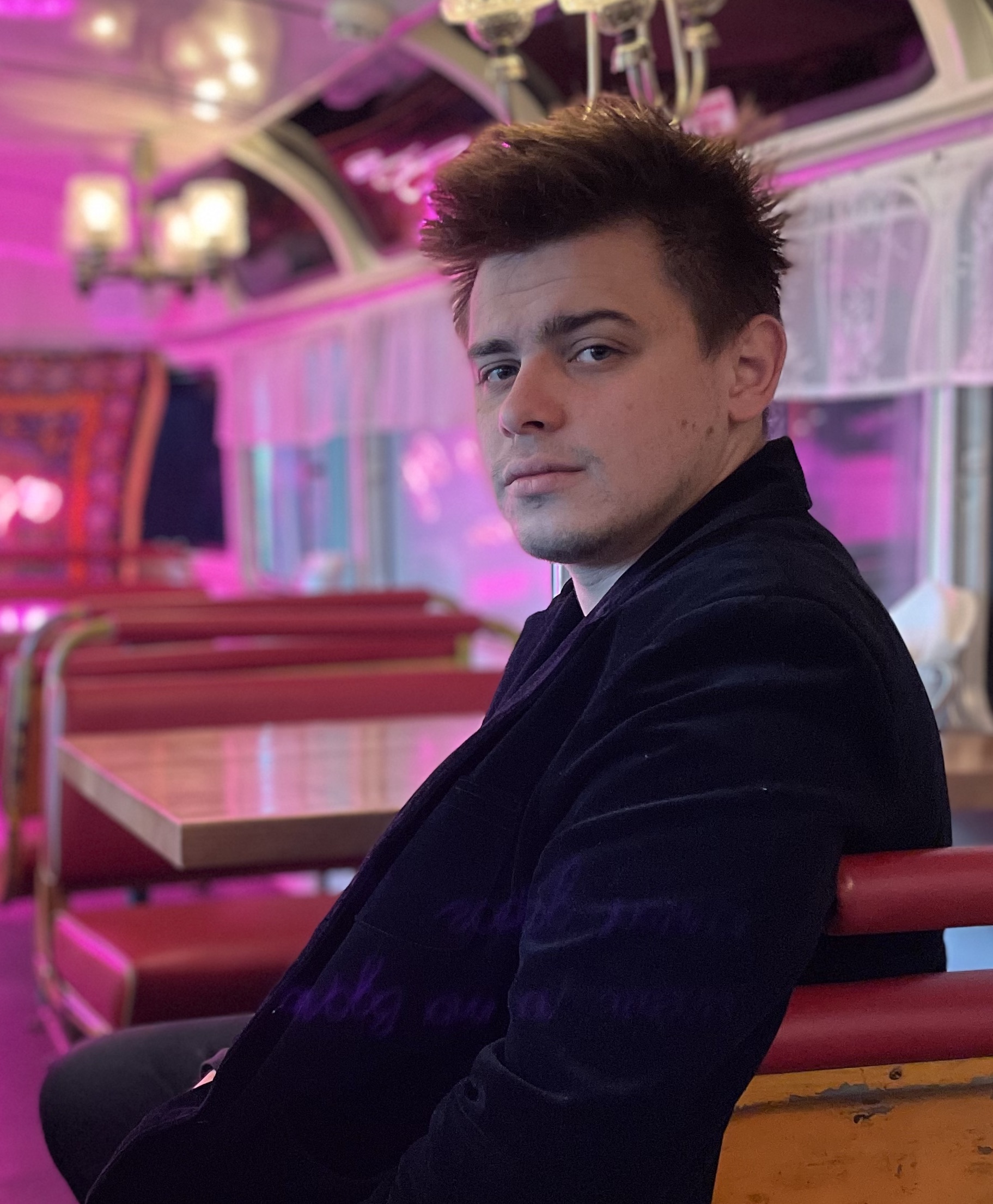They were highly inspired by Richard Florida's writing about Creative Class and Creative Cities. They were highly inspired by Richard Florida's writing about Creative Class and Creative Cities. LEM Station is a creative hub that contributes to the development of business, social, and cultural initiatives. The mission is to implement a transformation from an old tram depot at the intersection of Sakharov and Vitovsky streets into an innovative creative centre, which will become a point of intersection and self-fulfilment for artists, entrepreneurs, scientists and other representatives of the creative industries. Its co-founders are the famous entrepreneurs, businessman and public figure Mark Zarkhin, Taras Kytsmey, Dmytro Kosaryev and Oleh Matsekh. The hub will be constantly developed and changed. Coworking, an event hall, a maker space, a startup incubator, a multifunctional art centre for exhibitions, performances, and concerts, and a media hub will soon appear. There will also be a recycling area, a food court, a restaurant with catering service, car and bicycle parking, a children's centre, and a large public space.
The hub’s history
Ιn 2014, after the Revolution of Dignity, everybody was very inspired and motivated for the positive change and impact in their communities and country in general. The idea came from six entrepreneurs who were participating in writing the new concept of the city for the next ten years of development. The previous concept was to make the city of Lviv a touristic city. When we achieved it and became the most touristic city in the country, the new strategy was going to get in place. Six entrepreneurs in cooperation with the city council and their representative and CEO, Mykhailo Lemak, came up with an idea to make Lviv a creative city. They were highly inspired by Richard Florida's writing about Creative Class and Creative Cities. By 2015, it was accepted by the city council and got spread out. At the moment, we have two creative hubs already done since 2015 and six more in the making. It's not about being competitive and having a competitive edge, it's more about growing and developing the city into the city of the future. Those six entrepreneurs decided on the location, an old tram depot built at the end of the 19th century. The administrative building was built for the people who were operating the tram depot and electric station, because it was the first central electric station in the city. The compressor station is like a big square building that was built first in order to reach the potential of the Lviv metro station. Those are basically the three parts of our creative hub, a total of 8.000 square metres.
Due to the war, we had to postpone and freeze the process of renovation for around a year. We had over 600 events held in our space already.
In 2016, we had our first event, when the building was completely abandoned. It was some weird warehouse in a beautiful building crabbed with random objects and we had two months to prepare for the event. The first event was for the next five years, the biggest classical music festival in the country. This is how the hub transformed in less than two months. It is a unique cooperation of the private sector together with the public sector, since we were renting out this space for 50 years.
The inspiration came from Stanisław Lem, a Polish science fiction writer, well known for his sharp mind and for being very self ironic. His book “The Futurological Congress” is basically him envisioning the future through the lens of self irony and being a bit ironic about the future and people around it. We got really inspired by his futuristic approach and took it into consideration when developing the concept and the direction our space was going to take.
There is also a working electric station, which is still operating and came out actually very on point for the community right now. We didn't have electricity this winter. The station could generate electricity for us and the neighbourhood around us. There should also be a science museum, which is now a retro car exhibition. This is something that is going to change also in a while. Due to the war, we had to postpone and freeze the process of renovation for around a year. We had over 600 events held in our space already. Since we are still not commissioned yet, we are giving the opportunity for different events, organisers or theatres to use our space for free and opening up volunteer donations. We are building up a community of strong stakeholders.
Why did you choose to base your hub in this area?
This is a central part of the city, a historic area. The space was always there, but it was always sort of abandoned. This gorgeous late 19th century architecture, built by the Austrian Empire was not used in any ways, but just being storage for people from the municipality. This really fits well into the concept of the creative development of the city. Also, the idea that it was right at the point of the first electric station of the city gets a futuristic vibe. The founders were really inspired by the location and had a long couple of years of negotiations with the city. It's also connected to three big universities nearby. There is a huge student accommodation village right on the north. There are also a lot of tram stations. It was the right spot. The architecture and the planning of the building is very peculiar. We are trying to use it as much as possible into our interior design.
What did you manage to (re)build in your territory? What's the current situation after the Russian invasion?
Prior to the Russian invasion, it was a space for creatives to represent themselves and do interesting projects that would help them accelerate and reach to the level of commercialization of those projects. Even before the renovation started, we were already working as an acceleration hub for young creatives and helping them with our expertise. After the war started, we became a volunteer headquarters.
We started making live events with music, famous Ukrainian musicians playing in the bomb shelter and would also film it and get donations for the military.
On the basis of our community, we started helping the military and civilians. We became a volunteer hub. We have a lot of creatives, which are part of our community. Quite famous artists were helping us paint the military vehicles as well as normal vehicles. There were more than a hundred vehicles through our premises. They were also busy with decorating even the military equipment, putting on their wishes for the army people and also helping with the camouflage nets. We have one of the biggest bomb shelters in the central part of the city and we decided to cooperate together with the Artistic Front, a cultural association. We started making live events with music, famous Ukrainian musicians playing in the bomb shelter and would also film it and get donations for the military.
Besides that, we are working with the local authorities on a couple of cultural formats, as well as organising the exhibitions of weapons with the VR technology, showing the civilians how each of the weapons is used. We would do events to help people know how to protect themselves during showings, how to just do the first aid and keep each other healthy. All the events are generating money that is all going to trust funds distributed to our military.
Lviv is the Western biggest city of Ukraine. So we are the biggest city and the furthest from the battlefront. Still, every single person feels the war. We didn't have shelling for maybe a couple of months already, so it wasn't too dangerous. We are the main hub, where all the military equipment goes from the West, as well as near the main volunteer hub. Since it's safer, most of the operations of the headquarters or all the Western headquarters that are present in Ukraine are there. This gives us an opportunity to cooperate with a lot of Western NGOs and be a hub for military equipment as well. The internet connection has been stabilised in the last 3-4 weeks.
Now, we don't really have shutdowns in most of the regions. From late October until February, it was a really active phase. At that time, I was working on sending power generators, so everything works now, even during the shutdown, the cafes are having generators outside so people can still go to the cafes and restaurants. Everything is working. Business may not thrive but everybody's trying to hold their own and contribute to the economy.
How do you envision the future?
We aim to complete direct construction and launch the first phase this year. At the moment, we did all the shelling core work. With the projects that we are doing ourselves, we've already finished the interior design on paper. Now we are implementing this, but we are also finishing up the selection of operators for other premises, like shops and schools inside the hub. For our future plans, we do want to open up even despite war, we have a lot of stakeholders who are backing us up and supporting us. Since I have access to all the social media of our hub, I see so many support letters from our community. People really can't wait until we open up and put in some new lights into the neighbourhood. We are going to help the local council solve the transportation problem. We are helping them find solutions, together with the local council, on how to make it better. We are also inviting experts to give solutions.
These first couple months of not knowing what the future holds at all were very tough.
We're going to place a bicycle rental on our premises quite soon, as well as the strategic facility with a power supply station for the city. We are going to help the social nodes or the workers within those facilities to stabilise the electricity together with the use of experts we have contracts with. So, basically some social work, finishing up their construction and trying to launch all the phases as soon as we can. At the same time, we are still helping with the army. These first couple months of not knowing what the future holds at all were very tough. So, obviously, we froze all of our work for the first two, maybe three months. Since June last year, we have renewed everything. We are having pride in contributing to the economy, having workers still working, paying the paychecks, paying the taxes and just operating as normal. We believe it is unlikely that something worse is going to happen at that point, but we are alert.
 Spotlight Practice 1: Becoming stronger during hard times
Spotlight Practice 1: Becoming stronger during hard times
The first methodology we try to follow is that we are always adaptive. As we realise now during these hard times, we have learned to respond quickly, our connections and network skills are responsible for us being this way. Despite what is happening to the country, we continue to work and help the community. When the war is over, I’m sure we are going to research how we adjusted to the changes and to the reality of war and develop a methodology on how to face similar alarming situations. Regardless of circumstances, we can teach others about the public and private partnerships, as part of the revitalization in difficult conditions to reach their goals. This is quite a unique expertise that we have. After the first operational base, we will analyse the situation and share our experiences with others - once the war is over.

Spotlight Practice 2: Creating Opportunities
We are working on a win-win strategy with our network. We are giving our space to creatives and makers and we also give them the opportunity to work for us and to use our premises. For example our old windows and doors were given to makers to renovate. We have some scientists in our premises working on making artistic works from all the elements found from the garbage in the warehouse. We also have professors from the art academy working on creating sculptures and gifted us the bust of Stanisław Lem as a gratitude gift. We build strong bonds with those creatives by giving them opportunities but also getting a lot of love and work in return. This is the basis of how we want to operate later. We have some plans on what these premises are going to be filled with and all those elements are being done by always asking the art community for advice and their expertise. One of the challenges I would like to mention, since the Russian invasion, is that a lot of our workers have been drafted. So some of the top management of our space is being drafted as well. We have to adjust since some of them are working while being on the frontline.

Gregory Zarkhin, Project Manager, described to us how LEM Station managed to support the creative community, while contributing humanitarian aid to the military and the local community.